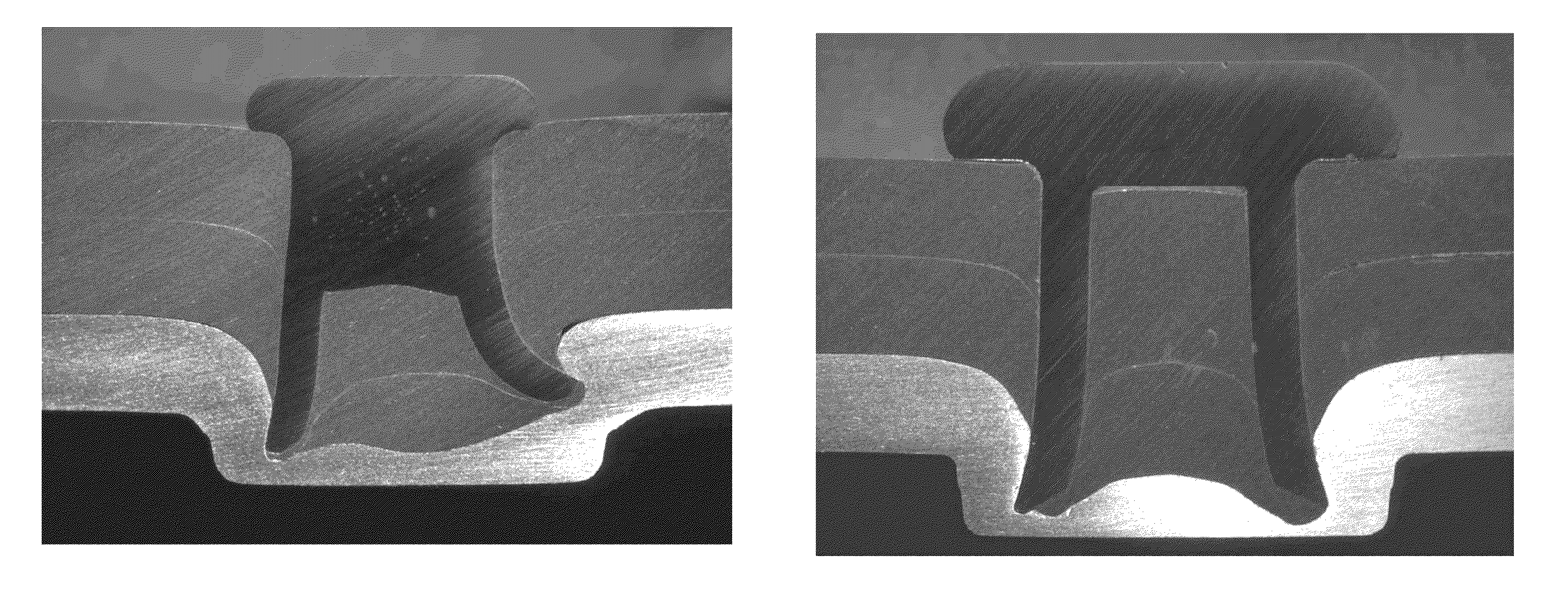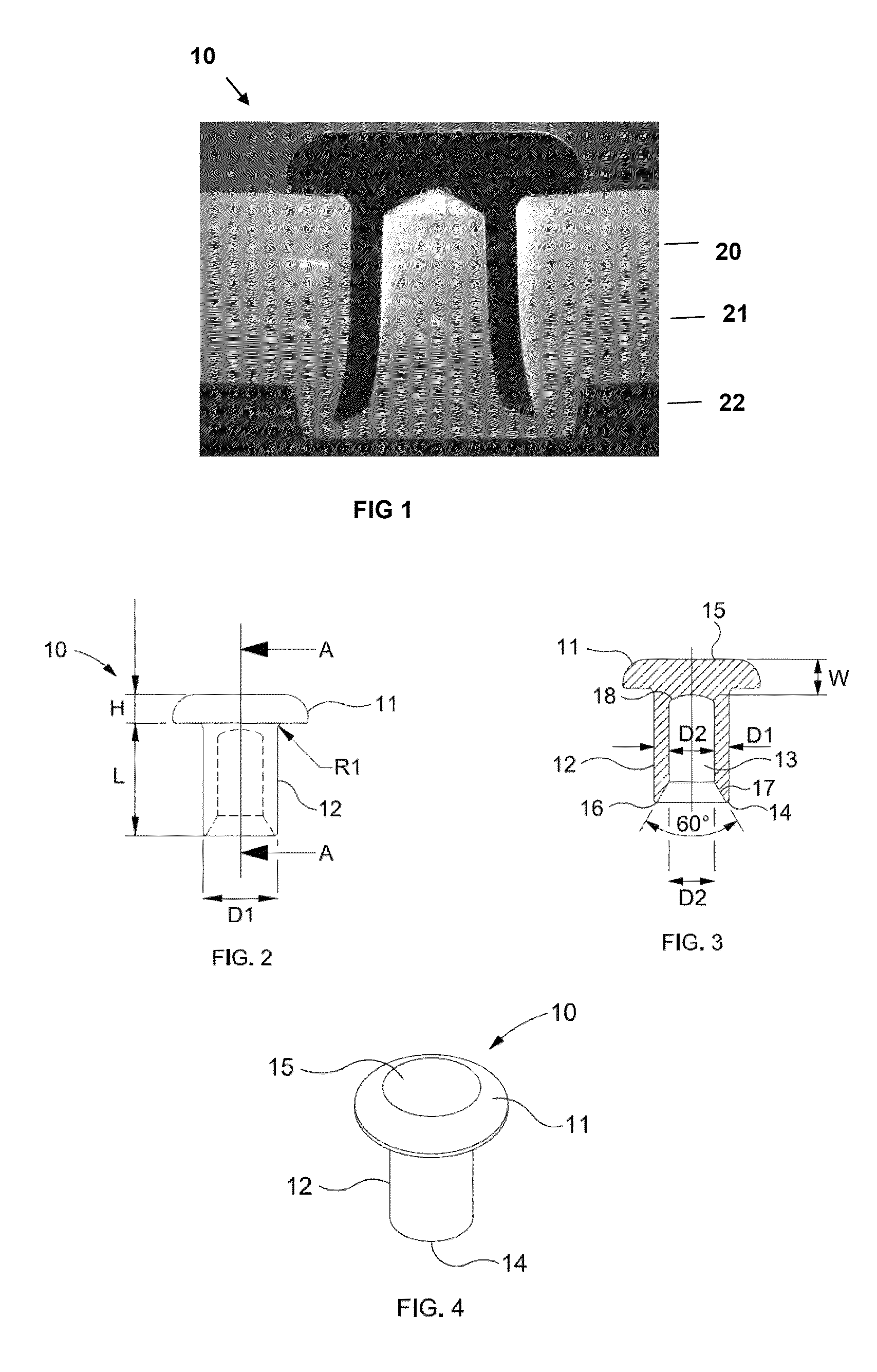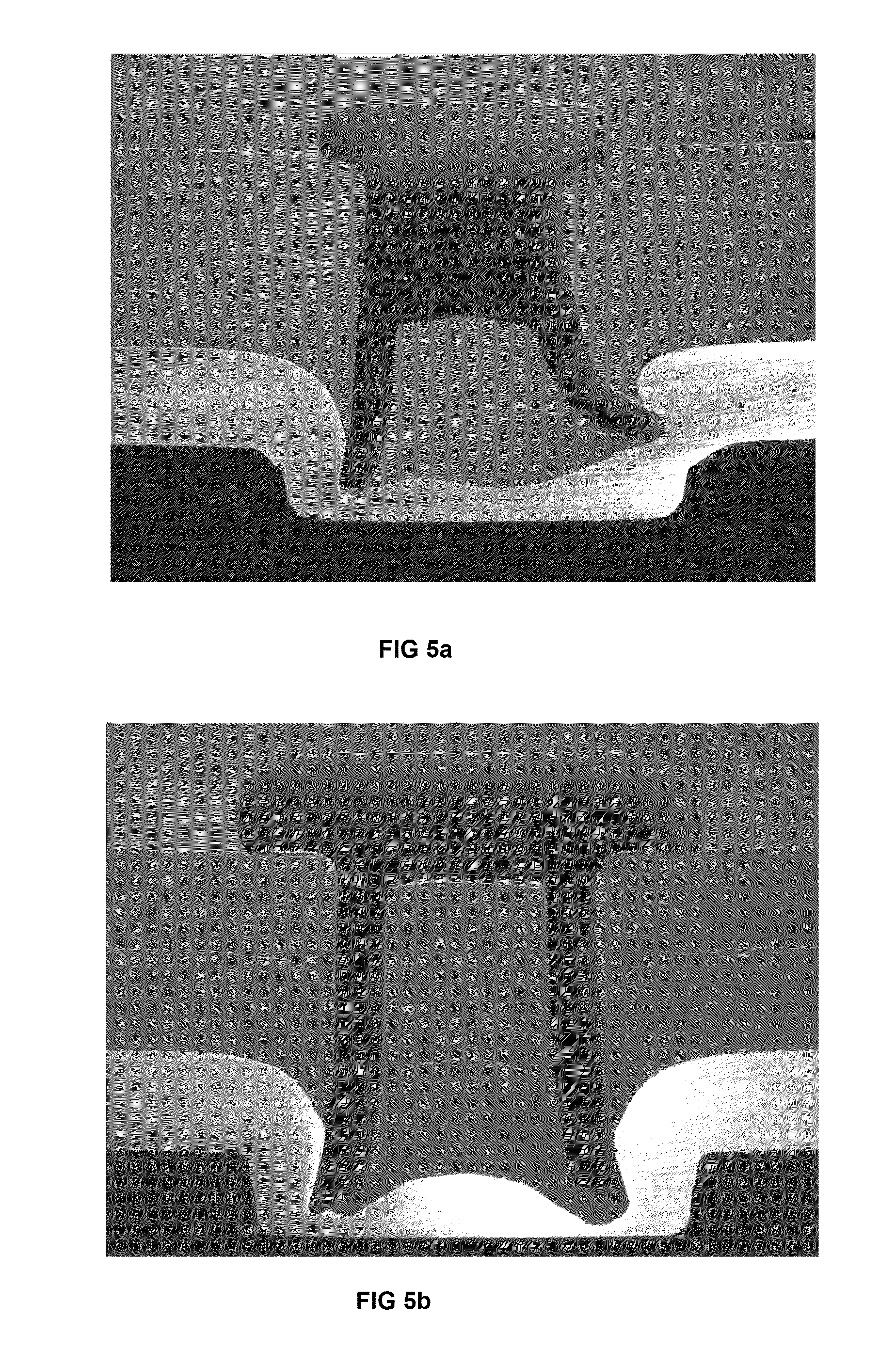Method for forming a joint in a stack of light metal alloy sheets
a technology of light metal alloy sheets and stacks, applied in sheet joining, rivets, screws, etc., can solve the problems of significant risk of rivet collapse, difficult or inconvenient spot welding of aluminum, and rivets not always suitable for thick stacks, etc., to achieve the effect of reducing the disadvantages
- Summary
- Abstract
- Description
- Claims
- Application Information
AI Technical Summary
Benefits of technology
Problems solved by technology
Method used
Image
Examples
Embodiment Construction
[0037]Tests performed by the inventors have established that a self-piercing rivet suitable for high strength, thick stack steels such as that described in our European patent No. 2024651 is not always suitable for thick stack, light metal alloys such as magnesium or higher strength aluminiums. These materials generally exhibit reduced ductility and thus have a tendency to fracture when used with conventional dies. The “button” of material that is deformed into the die tears during the rivet insertion process. This is undesirable as the finished joint is weakened and prone to corrosion. It has been realised by the inventors that such material should be joined by using a die with a relatively small volume die cavity (i.e. a shallow die) in order to avoid tearing. However, a reduction in the die depth serves to increase the force experienced by the rivet during insertion. Moreover, it has been found that there is a tendency for the end of the rivet shank to drag sheet material down th...
PUM
| Property | Measurement | Unit |
|---|---|---|
| thickness | aaaaa | aaaaa |
| length | aaaaa | aaaaa |
| ultimate tensile strength | aaaaa | aaaaa |
Abstract
Description
Claims
Application Information
 Login to View More
Login to View More - R&D
- Intellectual Property
- Life Sciences
- Materials
- Tech Scout
- Unparalleled Data Quality
- Higher Quality Content
- 60% Fewer Hallucinations
Browse by: Latest US Patents, China's latest patents, Technical Efficacy Thesaurus, Application Domain, Technology Topic, Popular Technical Reports.
© 2025 PatSnap. All rights reserved.Legal|Privacy policy|Modern Slavery Act Transparency Statement|Sitemap|About US| Contact US: help@patsnap.com



